- Blog
- 7 Tips to Optimize for Conversions on Your Ecommerce Website
7 Tips to Optimize for Conversions on Your Ecommerce Website
-
Nikolett Lorincz
- Conversion
- 6 min read
Table of Contents
Digital marketing is about a lot more than just driving as much traffic as possible to your website… It’s also about maximizing your ecommerce conversion rate.
It’s more cost-effective to use conversion rate optimization to grow your sales than to spend money on getting more web traffic. You want to be sure you’re making the most of the traffic you already have before trying to increase it.
There are lots of different tactics for generating as many ecommerce conversions as possible. In this article, we’ll go over 7 conversion rate optimization strategies that will help to increase your website’s conversion rate.
Let’s get started!
What is conversion rate optimization?
Conversion rate optimization (CRO) is the process of optimizing your site to increase the percentage of users who perform a desired action (such as making a purchase or responding to a call to action) on an ecommerce site.
Conversion optimization can mean improving any of the aspects of your website, from the copy and offers to your navigation and site structure. You don’t need to change everything at once, but you want to find places where small adaptations can make a big difference.
CRO means that you get the most from your existing traffic by ensuring as many website visitors as possible move through your conversion funnel.
What are the benefits of conversion rate optimization?
If you’re not using conversion rate optimization, you’re leaving a lot of money on the table. That’s because each of your site visitors represents an opportunity to not only make a sale, but also to gain a customer for life.
As such, the most significant benefit of conversion rate optimization is generating more paying customers from the same pool of incoming traffic.
A conversion funnel can help you get the most out of your marketing efforts. It leads to a higher average conversion rate, higher ROI, and lower customer acquisition costs. That’s because your digital marketing costs will be lower for each conversion you make.
After all, you’re not just trying to get users to view your web pages. You’re trying to progress those site visitors towards something—whether that’s a sale or an email signup.
What’s the best way to improve your conversion rate?
We’ve seen that conversion optimization is vital for every ecommerce business, but the jury’s still out on the best way to go about it.
A lot of the advice you’ll see about conversion rate optimization focuses on short-term tactics for quick sales. This includes steps like increasing urgency and scarcity by displaying fake limited-time offers.
However, these types of website elements come with a cost: shoppers can feel that they’re manipulative, which can hurt the user experience.
Fortunately, there’s a better way for both you and your customers: website personalization. Using website personalization, you’ll increase conversion rates and sales while retaining more customers. And your customers won’t get annoyed… instead, they’ll be pleased with the smooth user experience.
The most successful ecommerce stores like Amazon and Etsy seem to remember everything about each of their shoppers, which allows them to provide an individually-tailored shopping experience.
When you personalize the experience for all your website visitors based on their needs and interests, you’re getting them to the products and content they want to see more quickly. Customers really value this increased convenience, and they appreciate it when they feel that they’re in control of their online experience.
While these large ecommerce businesses run promotional offers and alert customers when an item is scarce on product pages, they do this for the benefit of the customer.
It’s about showing people what they’re interested in without making them have to search and search and search. Instead of pushing shoppers towards conversions above all else, successful online marketing takes a long-term, customer-centric approach.
7 conversion optimization tips that won’t ruin the user experience
As we’ve seen, conversion rate optimization is about making minor changes to your website experience that lead to more visitors completing a desired action. You should always make sure that these changes lead to a better shopping experience, not a worse one.
Here are seven strategies to optimize your ecommerce conversion rates without annoying your website visitors.
1. Recommend relevant products in blog articles
People have limited time and attention, so it’s a big deal when someone sits down to read something from your blog. You can assume that website visitors who are actively reading about a topic are interested in products related to it.
Whenever your blog articles mention your products or services, you should spice things up a little bit by embedding product recommendations into the article. This will help your content marketing by increasing conversions and bringing in more sales, since your readers know where to go next.
Here’s an example of a blog post from SmoothieBox that recommends products that are related to dieting and weight loss, which is exactly what the article is about!
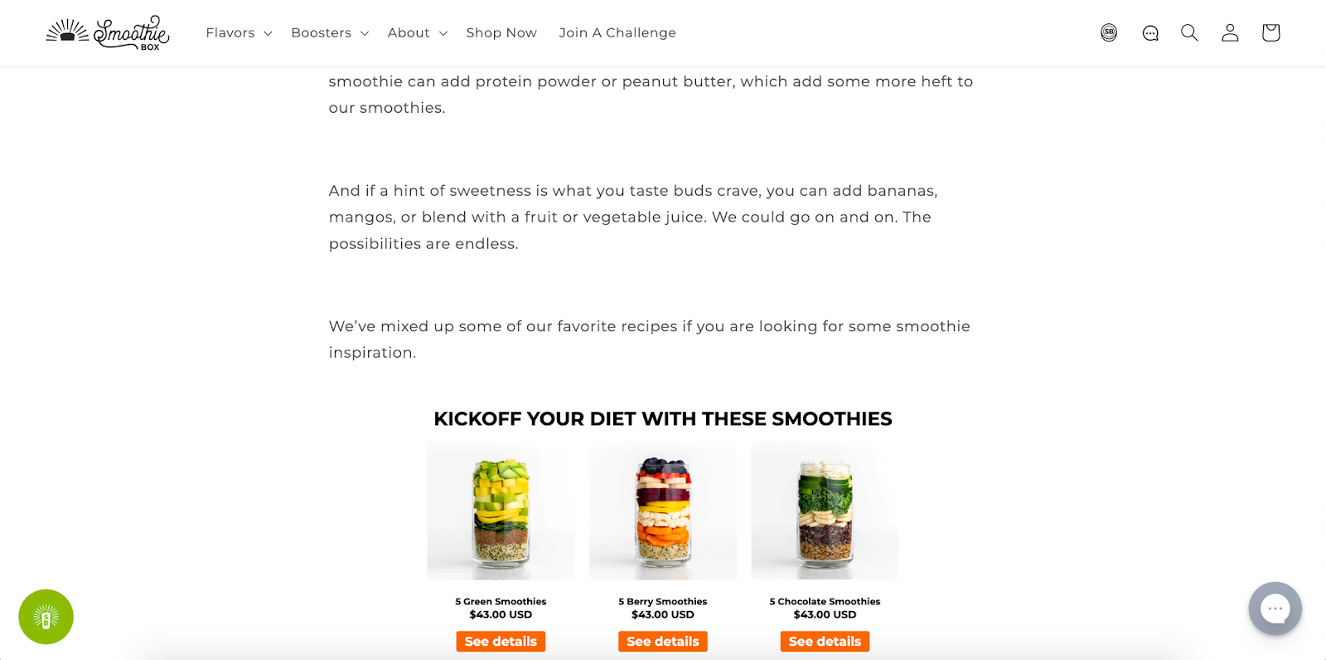
If you’d like to use this conversion rate strategy, you can get started with one of these templates:
2. Help your visitors find the right products
Personalized messages are a great way to start a dialog with your customers. And making sure that your customers feel like real people, not anonymous traffic, is a vital part of ecommerce conversion rate optimization. But to do that, you need to know something about your customers on an individual level.
Just asking a simple question is one of the best ways to find out what types of products someone is interested in.
Check out how Christopher Cloos asks their visitors in a very straightforward way what they’re interested in. Their 15% discount offer helps convince website visitors to answer the question and take this crucial first step.
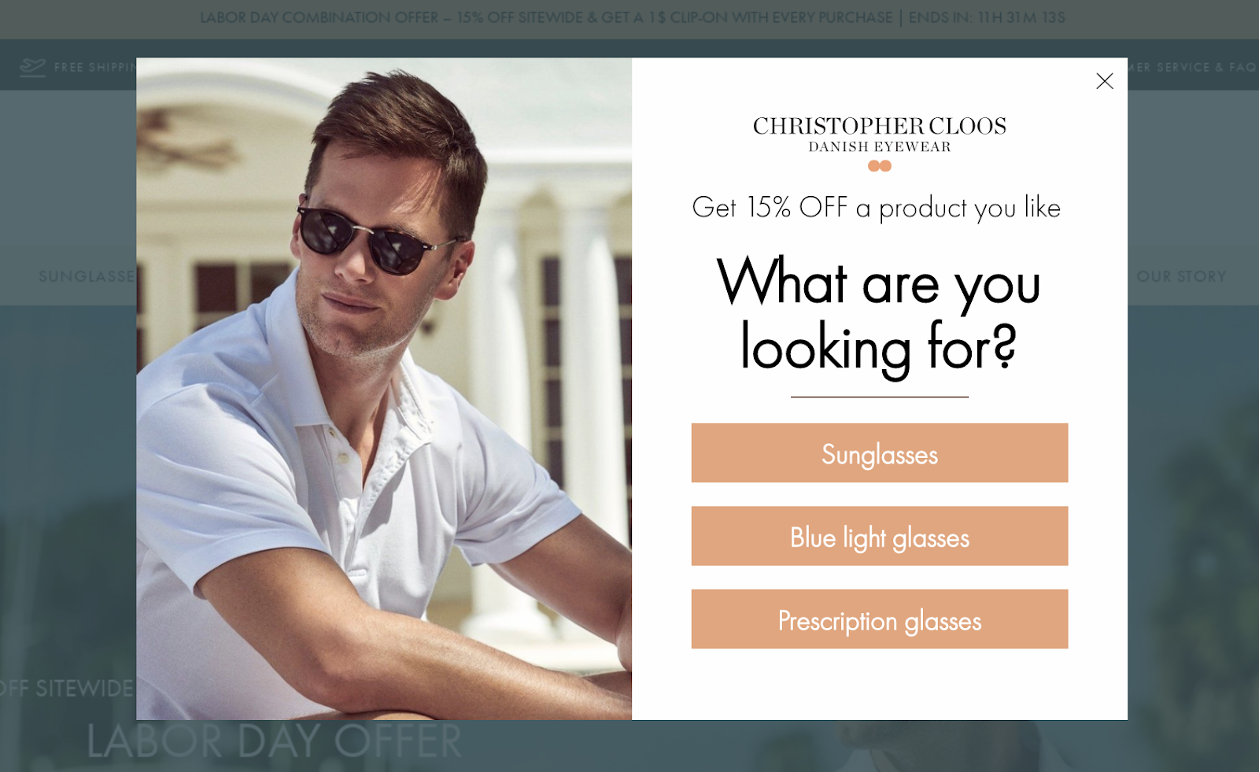
Once someone has chosen one of the options, they need to enter their email address to get the discount.
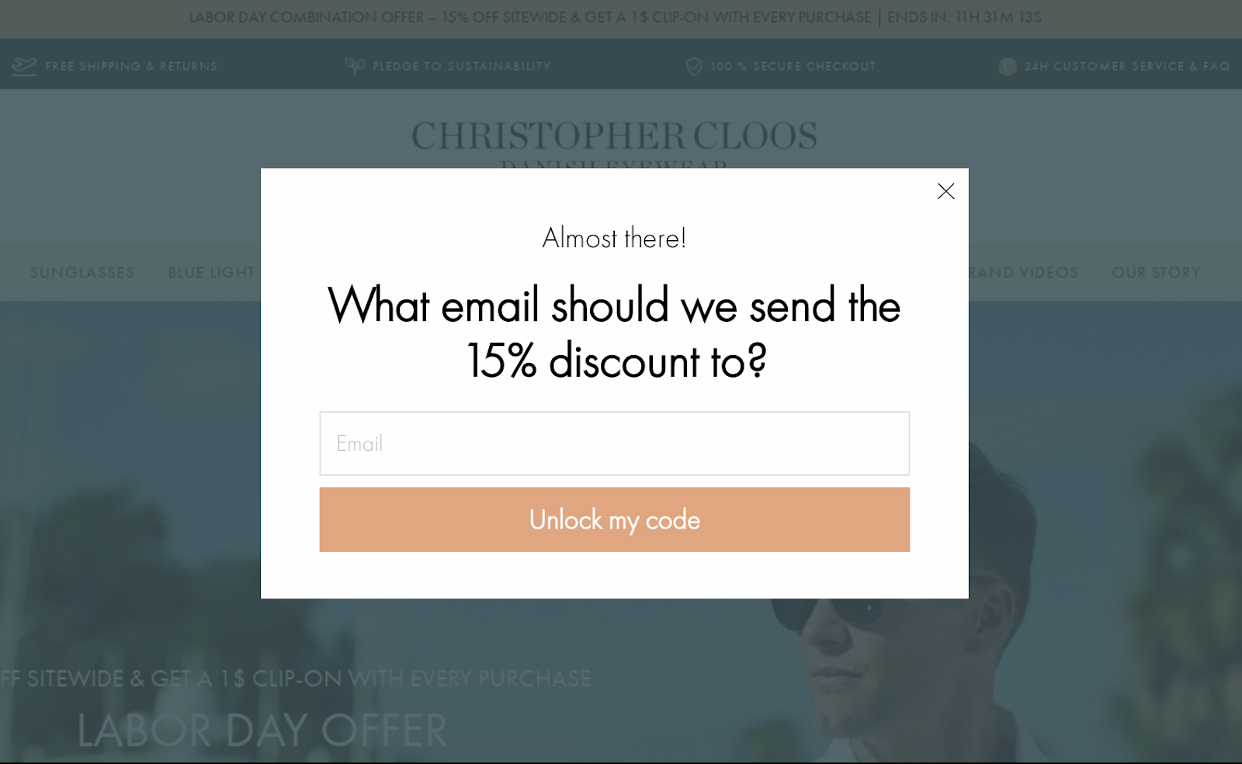
And finally, the last stage of the popup contains recommendations that are relevant to what the customer said they’re looking for. If they select sunglasses on the first page of the popup, they’ll see sunglasses and links to product pages.
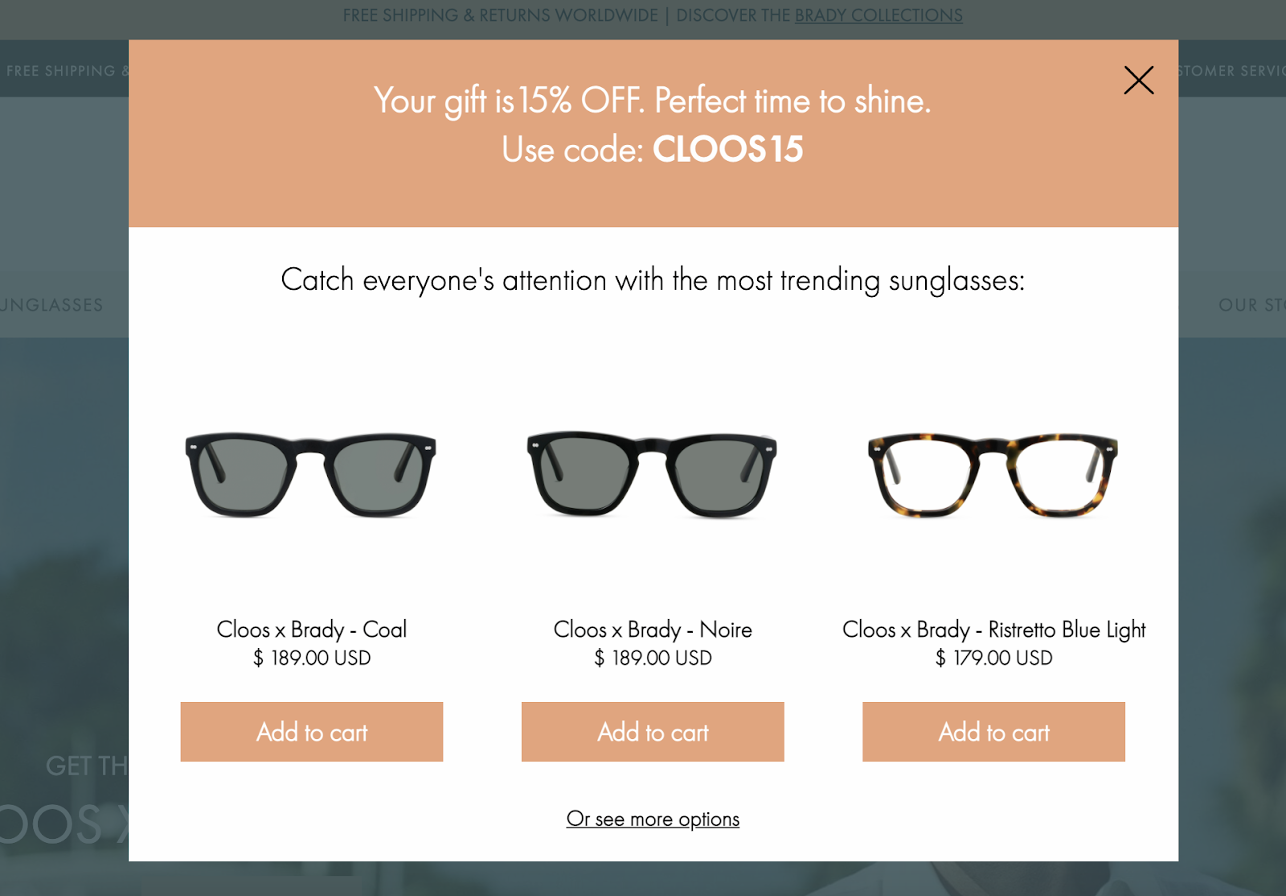
As you can see, Christopher Cloos uses a comprehensive process to take their target audience from merely reaching one of their landing pages to finding products they’re excited to buy.
To get started with this conversion optimization strategy, use these templates:
3. Show the most popular products in each category
When a member of your target audience is browsing one of your category pages, they’re probably actively looking for a product to buy. That’s because they’re already aware of the type of product that will solve their problem and are now weighing their options.
At this point, your goal should be helping them find the best product for them as quickly and painlessly as possible.
One way to go about this is by displaying the “most popular” or “trending” products in the category they’re interested in.
This type of social proof will really help convince your visitors that they’ve found the right product for them, especially if customer testimonials back it up.
Here’s an example of what this could look like:
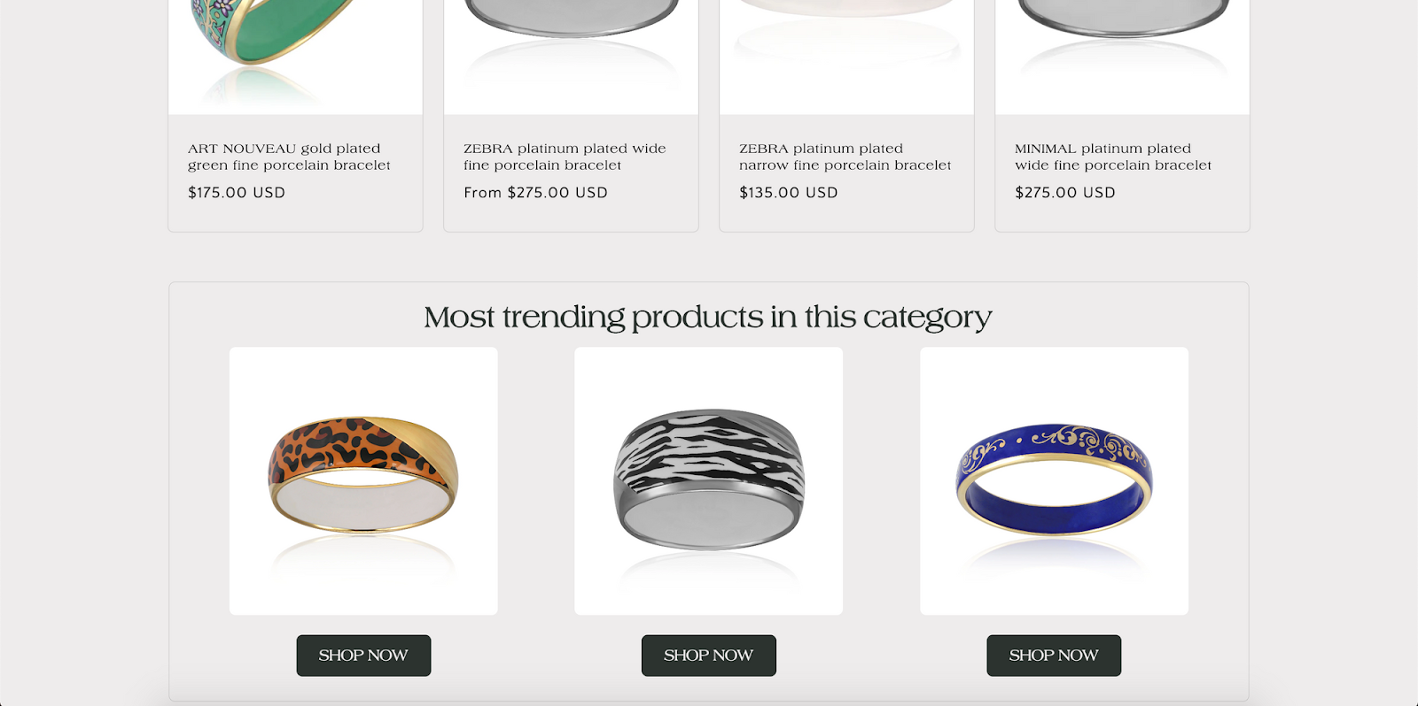
And here are some templates that you can use immediately:
4. Remind returning visitors where they left off
A common theme of these conversion rate optimization tips is that the more convenient you make the shopping experience for your customers, the better your conversion rates will be. This one is no different!
Try welcoming back customers who’ve visited your ecommerce site before with a message like the one below:
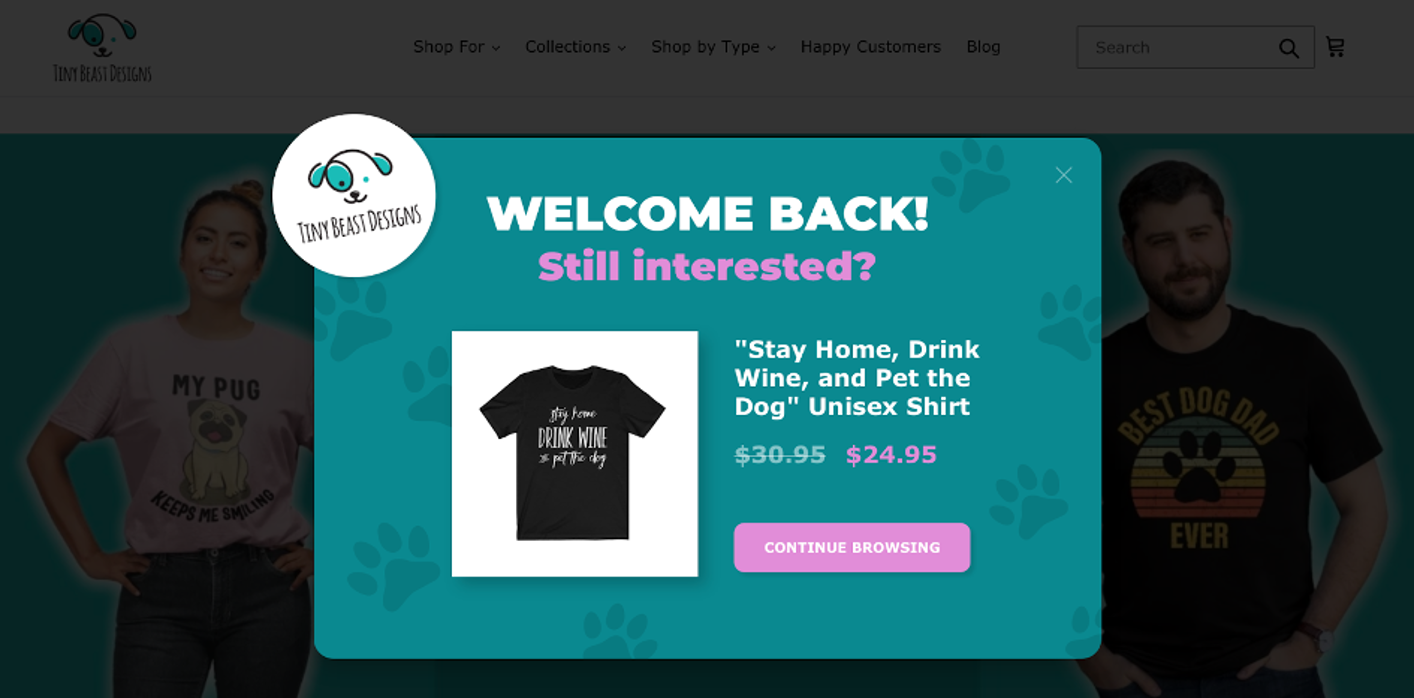
This brings them right up to speed with where they were before, making it easier to continue the shopping experience.
Use these templates to get started and improve returning visitor conversion rates:
5. Promote special offers for cart abandoners
Potential customers who abandon their carts are even further along the conversion funnel than category page viewers.
This is the perfect time to give them an irresistible special offer, since they likely only need one final push to finish their purchase.
An exit-intent popup, which appears when user behavior indicates someone is about to leave the site, is the best way to stop cart abandoners in their tracks.
Here’s a good example from Kiss My Keto:
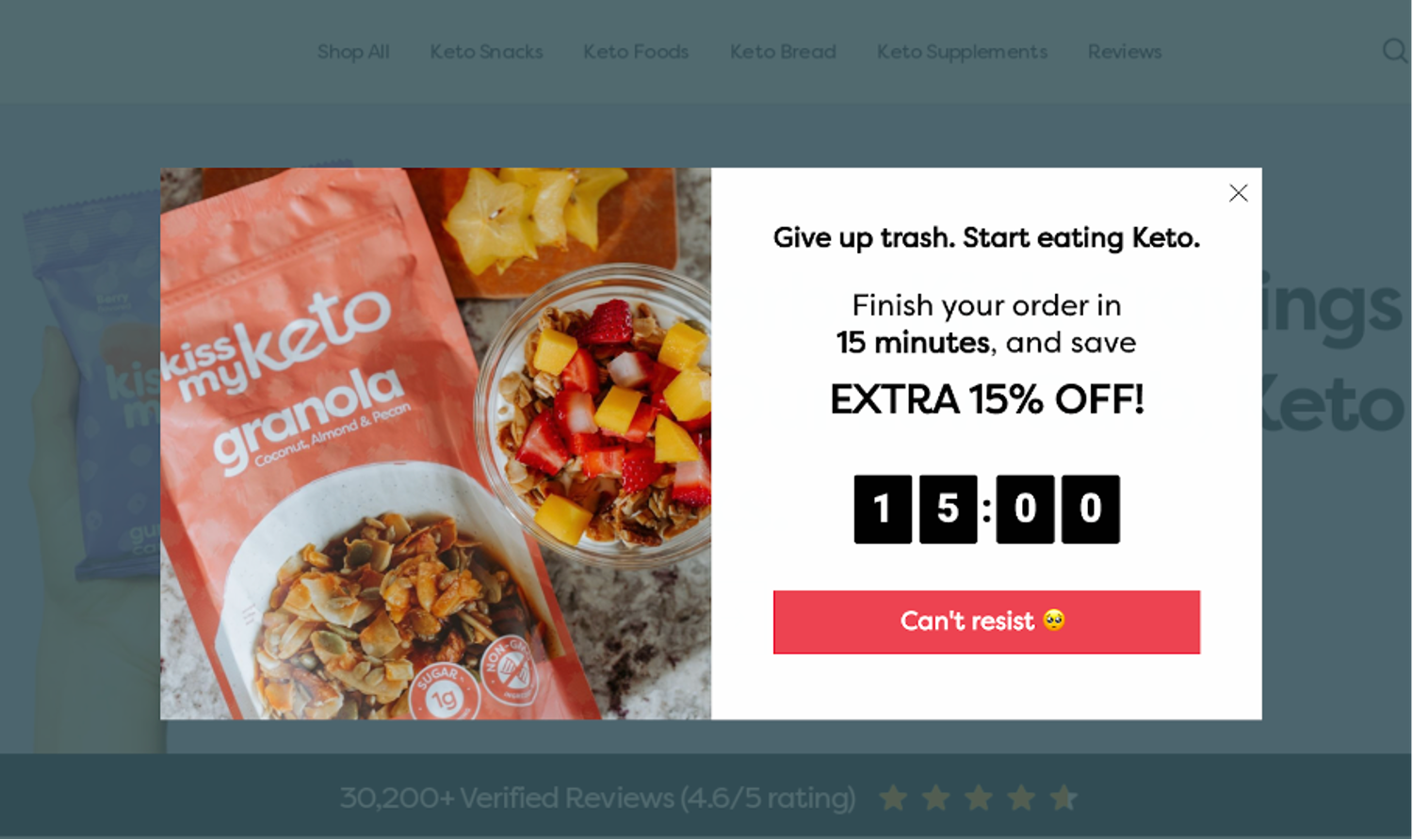
They offer a 15% discount to customers who finish their order within the next 15 minutes, which is a powerful incentive to buy now rather than later. Whenever potential customers delay their purchases, some will never return at all—which is a big drain on your conversion rate.
Besides a percentage discount, you can also offer free shipping to save cart abandoners and improve conversions.
Use these cart abandonment popup templates to ensure that cart abandoners finish making a purchase:
6. Use coupon reminders to increase redemption
When a potential customer has an active coupon for your online store, you want to make sure that they don’t forget about it.
A sticky bar is the perfect way to keep an active coupon at the top of your customer’s mind, since it’s always on screen but doesn’t interrupt the shopping experience.
This is a great way to make sure that your coupon codes do what you intended them to do: raise your ecommerce conversion rates and boost sales.
Looking for small improvements like these is how you can make real gains with your conversion rate optimization.
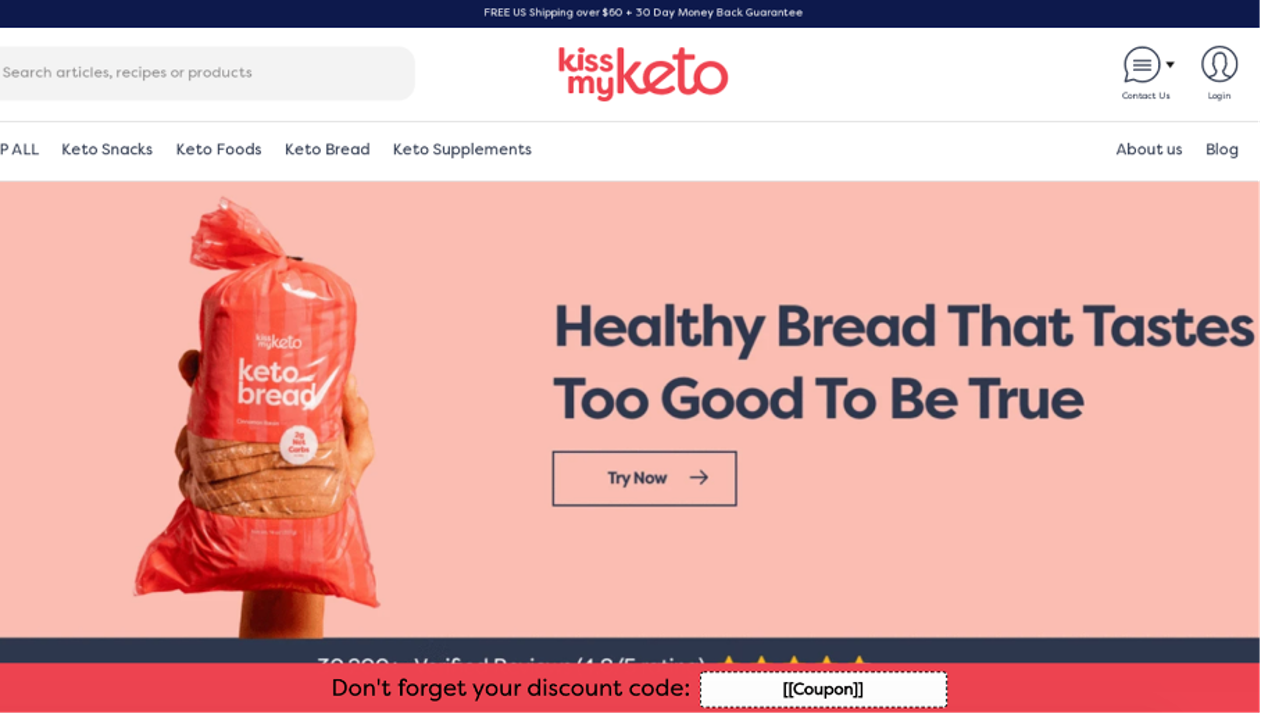
Use these ready-to-use coupon reminder templates to boost conversions:
7. Use dynamic free shipping bars to increase the average order value
Dynamic free shipping bars nudge customers to complete their orders (and spend more) by using the possibility of free shipping as an incentive. Anyone who’s done any internet marketing can tell you how much shoppers love free delivery.
It works like this: when a website visitor adds an item to their cart, the free shipping bar appears and displays exactly how much more they must spend to qualify for free shipping.
For example, if your free shipping threshold is $75 and a visitor adds an item worth $55 to their cart, the shipping bar would say “$20 left to get free shipping!”

As mentioned, this is an excellent conversion rate optimization tactic because it also tends to increase your average order value, which is even more of a revenue booster!
Get started with these templates:
Want more tips on conversion rate optimization? Check out this video for proven strategies to get more conversions:
FAQ
What does it mean to optimize for conversions?
Optimizing for conversions means refining various aspects of your website to encourage visitors to complete desired actions, such as making a purchase, signing up for a newsletter, or adding items to their cart. The goal is to create a seamless, persuasive user experience that turns more visitors into customers, boosting your overall conversion rate.
What are micro conversions?
Micro conversions are small actions that visitors take on your site that indicate they are moving closer to a purchase or other primary goal. Examples include clicking on a product, signing up for an email list, viewing product videos, or adding an item to a wish list. While they don’t directly result in a sale, they’re valuable indicators of customer interest and engagement.
What are macro conversions?
Macro conversions are the primary, high-value actions that directly impact your business goals. In ecommerce, this typically means completing a purchase or a sale. A macro conversion is the ultimate indicator of your website’s success, as it reflects how well it encourages customers to finalize transactions.
How to calculate your conversion rate?
To calculate your conversion rate, divide the number of conversions by the total number of visitors and multiply by 100 to get a percentage. For example, if you had 100 conversions and 2,000 visitors, your conversion rate would be (100 / 2000) * 100 = 5%.
What is a good ecommerce conversion rate?
A good ecommerce conversion rate varies by industry, but the average falls between 1% and 3%. High-performing ecommerce sites may achieve rates of 5% or higher. Improving the conversion rate of your ecommerce store above the industry average generally involves testing different elements, such as your call-to-action, checkout page, and product pages, to see what resonates most with your audience.
Wrapping up
Conversion rate optimization is simply about trying to increase conversions wherever possible, ensuring you don’t lose potential customers you could have easily sold to…if only you’d had the right optimization processes in place!
You should dig into your site’s quantitative and qualitative data by checking out your Google Analytics account and running surveys to find out what parts of your customer journey could be improved using conversion rate optimization.
Then, when you have an in-depth understanding of where changes need to be made, you can use a website personalization tool like OptiMonk to make those changes. You can use OptiMonk for free, so there’s no reason not to get started with conversion rate optimization today!
Recommended reading: 10 Conversion Rate Optimization Experts You Need to Follow
Migration has never been easier
We made switching a no-brainer with our free, white-glove onboarding service so you can get started in the blink of an eye.

What should you do next?
Thanks for reading till the end. Here are 4 ways we can help you grow your business:
Boost conversions with proven use cases
Explore our Use Case Library, filled with actionable personalization examples and step-by-step guides to unlock your website's full potential. Check out Use Case Library
Create a free OptiMonk account
Create a free OptiMonk account and easily get started with popups and conversion rate optimization. Get OptiMonk free
Get advice from a CRO expert
Schedule a personalized discovery call with one of our experts to explore how OptiMonk can help you grow your business. Book a demo
Join our weekly newsletter
Real CRO insights & marketing tips. No fluff. Straight to your inbox. Subscribe now
Nikolett Lorincz
- Posted in
- Conversion
Partner with us
- © OptiMonk. All rights reserved!
- Terms of Use
- Privacy Policy
- Cookie Policy
Product updates: January Release 2025








